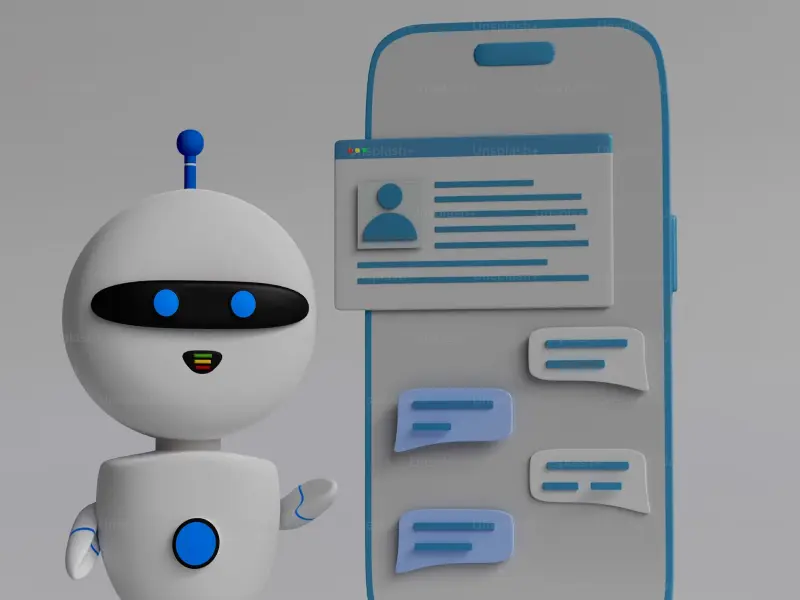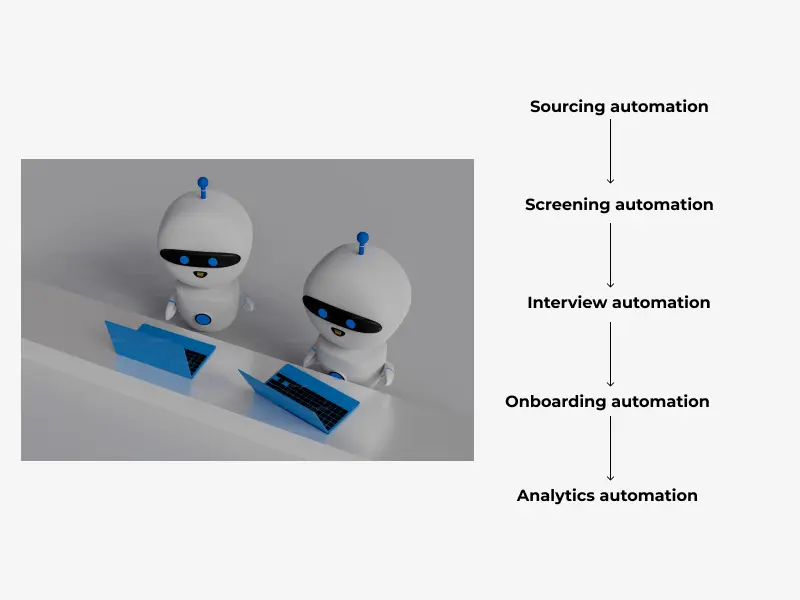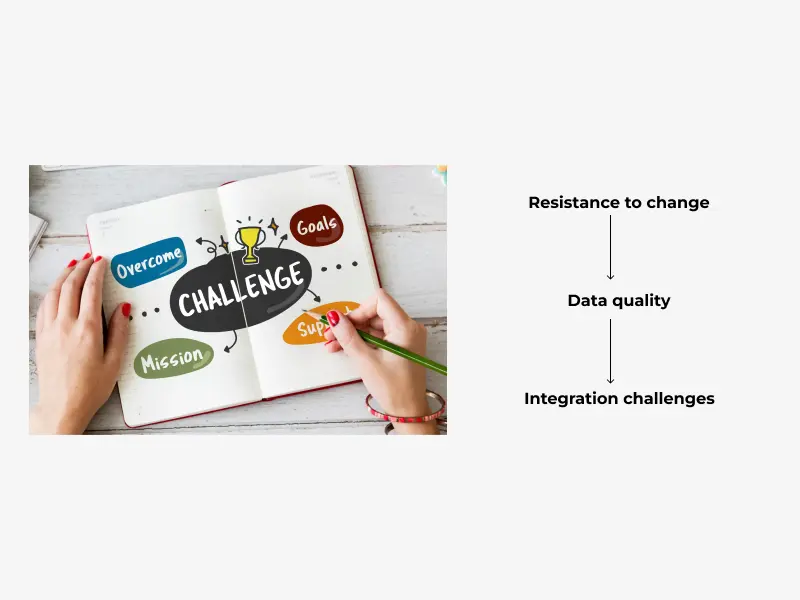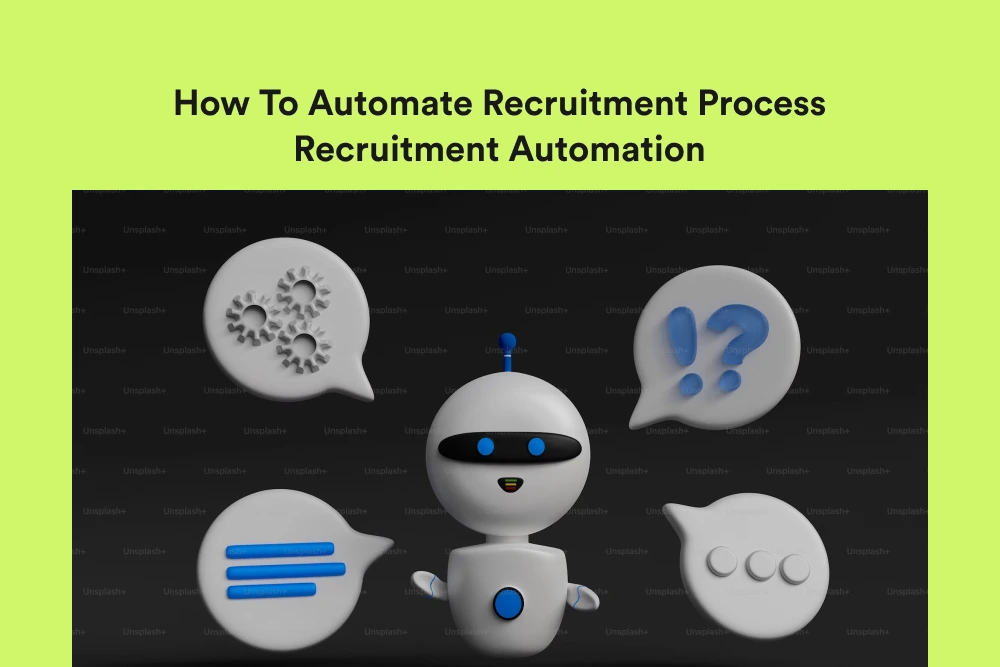Any organization’s expansion and success depend heavily on recruitment. Traditional hiring practices, however, can be expensive, time-consuming, and prone to human mistake. Automation in hiring can help in this situation. Utilizing automation tools and technology, businesses may speed up the hiring process, save time, and make better informed hiring selections. We will examine the definition of recruitment automation, its several subtypes, its difficulties, and the upcoming developments in this area in this post.
What is Recruitment Automation?
Recruitment automation refers to the use of technology to automate various aspects of the recruitment process, including sourcing, job posting, candidate screening, interview scheduling, and offer management. It aims to eliminate manual, repetitive tasks, and enable recruiters to focus on higher-value activities such as candidate engagement and talent acquisition strategy.
In today’s competitive job market, organizations are constantly seeking ways to streamline their recruitment processes and attract top talent efficiently. Recruitment automation has emerged as a game-changer in this regard, offering innovative solutions to optimize the entire hiring journey.

One of the key functionalities of recruitment automation is sourcing. Traditionally, recruiters had to manually search for potential candidates through various channels, such as job boards, social media platforms, and professional networking sites. With recruitment automation tools, this process becomes more efficient and targeted. These tools leverage advanced algorithms to automatically search and match job requirements with suitable candidates, saving recruiters valuable time and effort.
Moreover, recruitment automation tools also play a crucial role in job posting. They enable recruiters to post job openings across multiple platforms simultaneously, reaching a wider audience and increasing the chances of attracting qualified candidates. These tools often come with built-in analytics capabilities, allowing recruiters to track the performance of their job postings and make data-driven decisions to improve their recruitment strategies.
Candidate screening is another area where recruitment automation shines. Instead of manually reviewing countless resumes and applications, recruiters can utilize automation tools to screen candidates based on predefined criteria. These tools use AI and ML algorithms to analyze resumes, assess qualifications, and identify the most suitable candidates for further consideration. This not only speeds up the screening process but also ensures a more objective evaluation of candidates.
Interview scheduling can be a time-consuming task for recruiters, especially when dealing with multiple candidates and busy hiring managers. Recruitment automation tools simplify this process by offering automated scheduling functionalities. These tools integrate with calendars and send out interview invitations, allowing candidates to select their preferred time slots. This eliminates the back-and-forth communication and minimizes scheduling conflicts, making the interview process more efficient and convenient for all parties involved.
Furthermore, recruitment automation tools can also assist in offer management. They provide a centralized platform where recruiters can generate and send out offer letters, track candidate responses, and manage negotiations. These tools streamline the entire offer management process, reducing the chances of miscommunication and ensuring a smooth transition from candidate selection to onboarding.
It is important to note that recruitment automation is not meant to replace human recruiters. Instead, it empowers them by automating repetitive tasks and providing valuable insights to make informed decisions. By leveraging the power of AI, ML, and NLP, recruitment automation tools enable recruiters to focus on building relationships with candidates, developing effective talent acquisition strategies, and ultimately, making better hiring decisions.
Recruitment automation will become more and more important as the labor market changes, assisting businesses in retaining their competitive edge and luring top candidates. Recruiters may increase their effectiveness, enhance the applicant experience, and contribute to the overall success of their organizations by utilizing this technology.
The Different Types of Recruitment Automation
The hiring process has undergone a transformation, becoming more productive and efficient. It can be divided into various types according on the part of the hiring process it automates:

- Sourcing automation: In this sort of automation, appropriate candidate profiles are found and scraped from a variety of internet channels, including job boards, social networks, and business websites. In order to find people who match the required qualifications and competencies, these technologies make use of cutting-edge algorithms. Recruiters can save a considerable amount of time and effort by automating the sourcing process compared to manual searches. Additionally, sourcing automation enables recruiters to reach out to possible applicants who might not have directly applied, allowing them to cast a wider net.
- Screening automation: By employing AI to screen and filter applicant applications based on established criteria, screening automation allows recruiters to save time. The system can evaluate resumes and cover letters, pinpoint crucial competencies, and rate applicants according to how well-suited they are for the position. This technology frees up recruiters’ time so they can concentrate on the most qualified applicants rather than having to manually review every application. Additionally, because the AI algorithms are created to evaluate individuals exclusively based on their qualifications, it guarantees a fair and objective screening procedure.
- Interview automation: Automated interview scheduling tools simplify the process of coordinating interviews between candidates and hiring managers. These tools can sync with calendars, send automated reminders, and provide interviewers with relevant candidate information, enabling a seamless interview experience. Furthermore, some interview automation platforms offer video interviewing capabilities, allowing recruiters to conduct remote interviews without the need for physical presence. This not only saves time and travel costs but also widens the talent pool by enabling recruiters to interview candidates from anywhere in the world.
- Onboarding automation: Onboarding automation focuses on streamlining the new hire onboarding process. It involves automating tasks such as sending offer letters, gathering new hire information, setting up HR systems, and providing access to training materials. By automating these administrative tasks, onboarding automation ensures a smooth transition for new employees and reduces the chances of errors or delays. It also frees up HR professionals to focus on more strategic aspects of onboarding, such as cultural assimilation and employee engagement.
- Analytics automation: In addition to the aforementioned sorts, analytics automation in recruitment is becoming more and more popular. This includes analyzing enormous volumes of recruitment data using AI and machine learning algorithms to produce useful insights. Recruiters can obtain important insights into their hiring methods, spot areas for improvement, and make data-driven decisions by automating the data analysis process. Automation of analytics can aid in streamlining hiring procedures, enhancing the candidate experience, and improving overall hiring results.
Recruitment automation has undoubtedly transformed the way organizations approach talent acquisition. By leveraging the power of AI and automation, recruiters can streamline their workflows, reduce manual effort, and make more informed hiring decisions. However, it is important to note that while automation can enhance efficiency, it should always be complemented by human judgment and expertise. The human touch in recruitment is irreplaceable, as it involves assessing cultural fit, soft skills, and other intangible qualities that cannot be fully captured by technology.
The Challenges of Recruitment Automation
Recruitment automation has completely changed the hiring process and has several advantages for enterprises. However, it also has its own unique set of problems that must be solved. Take an in-depth look at a number of these challenges such as:

Resistance to change: Implementing a new recruitment automation system requires a shift in mindset and processes. Some employees may resist this change, fearing job insecurity or a loss of control. It is crucial for organizations to provide proper change management and communication to address these concerns and ensure a smooth adoption. By highlighting the advantages of automation, such as increased efficiency and reduced manual work, organizations can alleviate employees’ fears and encourage their active participation in the implementation process.
Data quality: Automation heavily relies on data for decision-making. Inaccurate or incomplete data can lead to bias or flawed outcomes. Maintaining high data quality standards is essential to ensure reliable results. Organizations should establish data governance policies and procedures to validate and verify the accuracy and completeness of the data. Regularly reviewing and updating data sources will help maintain data integrity and minimize the risk of biased decision-making.
Integration challenges: Integrating recruitment automation tools with existing HR systems and processes can be complex. Ensuring seamless data synchronization and compatibility between different systems requires proper planning and technical expertise. Organizations should invest in robust integration solutions and work closely with IT teams to ensure a smooth integration process. By addressing integration challenges upfront, organizations can avoid data discrepancies and streamline their recruitment processes.
Despite these challenges, organizations that successfully implement recruitment automation can reap significant benefits. Improved efficiency, cost savings, and better candidate experiences are just a few of the advantages that automation can bring to the recruitment process. By addressing the challenges head-on and implementing effective strategies, organizations can maximize the potential of recruitment automation and stay ahead in the competitive talent acquisition landscape.
The Future of Recruitment Automation
Recruiting automation has a bright future as technology advances. Pay particular attention to the following trends:
- Advanced AI capabilities: AI algorithms will advance, allowing recruiters to evaluate more datasets, forecast job success, and accurately identify top talent. AI-driven chatbots may be a key component of candidate interaction and preliminary screenings.
- Enhanced candidate experience: Automation will focus on creating personalized and engaging candidate experiences throughout the recruitment journey. Interactive assessments, video interviews, and virtual reality simulations may become common tools to attract and engage candidates.
- Integration with other HR technologies: Recruitment automation will seamlessly integrate with other HR technologies such as applicant tracking systems, employee performance management tools, and learning management systems. This integration will enable a holistic view of talent management and improve overall HR processes.
- Continued focus on diversity and inclusion: Automation can assist in removing prejudice from the hiring process by concentrating on objective facts rather than individual opinions. Automation will be used by businesses to maintain equitable and inclusive hiring procedures and to draw in a varied talent pool. Automation will alter how businesses find and hire top people in the quickly changing recruitment industry. Recruiters will have access to strong algorithms with superior AI skills that can evaluate enormous volumes of data, giving insightful information on job performance predictions and locating the most qualified individuals. The hiring procedure will be greatly streamlined, saving time and resources for both recruiters and candidate.
Furthermore, automation will not only benefit recruiters but also enhance the overall candidate experience. Personalization will be at the forefront, with automation tools tailoring interactions and assessments to each individual’s unique skills and preferences. Interactive assessments will replace traditional paper-based tests, allowing candidates to showcase their abilities in a more engaging and dynamic way. Video interviews will become more prevalent, providing candidates with the opportunity to showcase their personality and communication skills virtually. Additionally, virtual reality simulations may be used to assess candidates’ performance in real-world scenarios, providing a more accurate representation of their capabilities.
Recruitment automation will also integrate seamlessly with other HR technologies, creating a unified ecosystem that optimizes talent management. Applicant tracking systems will work hand in hand with recruitment automation tools, ensuring a smooth transition from initial screening to the final hiring decision. Employee performance management tools will leverage automation to provide continuous feedback and development opportunities, enabling organizations to nurture and retain top talent. Learning management systems will also be integrated, allowing for targeted training and upskilling programs based on individual employee needs and career goals.
One of the most significant advantages of recruitment automation is its potential to eliminate bias in the hiring process. By relying on objective data and algorithms, automation can help organizations make fair and inclusive hiring decisions. This will result in a more diverse and talented workforce, as candidates from all backgrounds will have equal opportunities to showcase their abilities and potential. With automation, organizations can ensure that their hiring practices align with their diversity and inclusion goals, creating a more equitable workplace.
In conclusion, recruitment automation offers immense potential for organizations to streamline their recruitment process and make more informed hiring decisions. By leveraging technology, companies can save time, reduce costs, and improve the overall quality of their hires. However, successful implementation requires careful planning, change management, and a commitment to maintaining data integrity. As we look towards the future, advancements in AI, improved candidate experiences, and integration with other HR technologies will continue to shape and enhance the field of recruitment automation.










